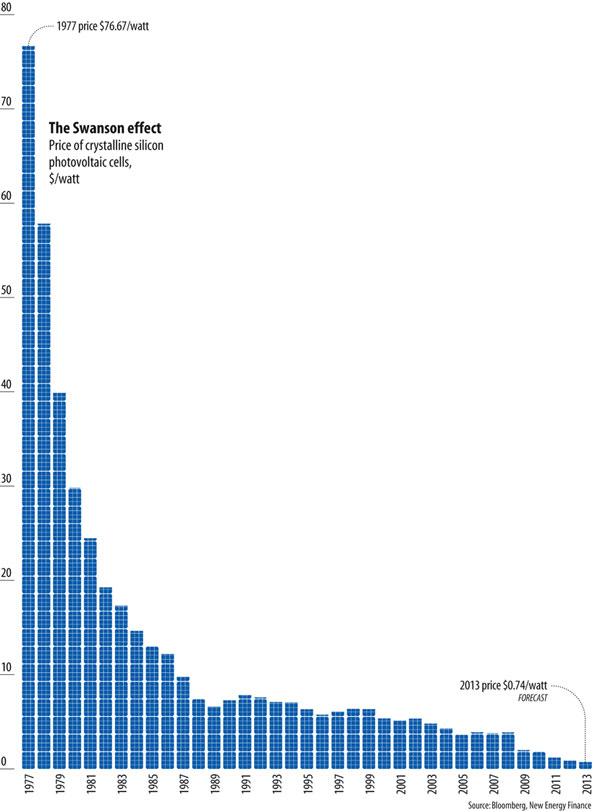Alternative energy costs are dropping
Solar power is expensive, right? Actually, the high cost of alternative energy is a good example of a mesofact. As this graph shows, the cost of producing photovoltaic cells has dropped two orders of magnitude over the past 35 years, bringing costs within range of fossil fuel energy production.

The underlying cause of this disruption is a phenomenon that solar’s supporters call Swanson’s law, in imitation of Moore’s law of transistor cost. Moore’s law suggests that the size of transistors (and also their cost) halves every 18 months or so. Swanson’s law, named after Richard Swanson, the founder of SunPower, a big American solar-cell manufacturer, suggests that the cost of the photovoltaic cells needed to generate solar power falls by 20% with each doubling of global manufacturing capacity. The upshot (see chart) is that the modules used to make solar-power plants now cost less than a dollar per watt of capacity. Power-station construction costs can add $4 to that, but these, too, are falling as builders work out how to do the job better. And running a solar power station is cheap because the fuel is free.
Coal-fired plants, for comparison, cost about $3 a watt to build in the United States, and natural-gas plants cost $1. But that is before the fuel to run them is bought. In sunny regions such as California, then, photovoltaic power could already compete without subsidy with the more expensive parts of the traditional power market, such as the natural-gas-fired “peaker” plants kept on stand-by to meet surges in demand. Moreover, technological developments that have been proved in the laboratory but have not yet moved into the factory mean Swanson’s law still has many years to run.





Stay Connected